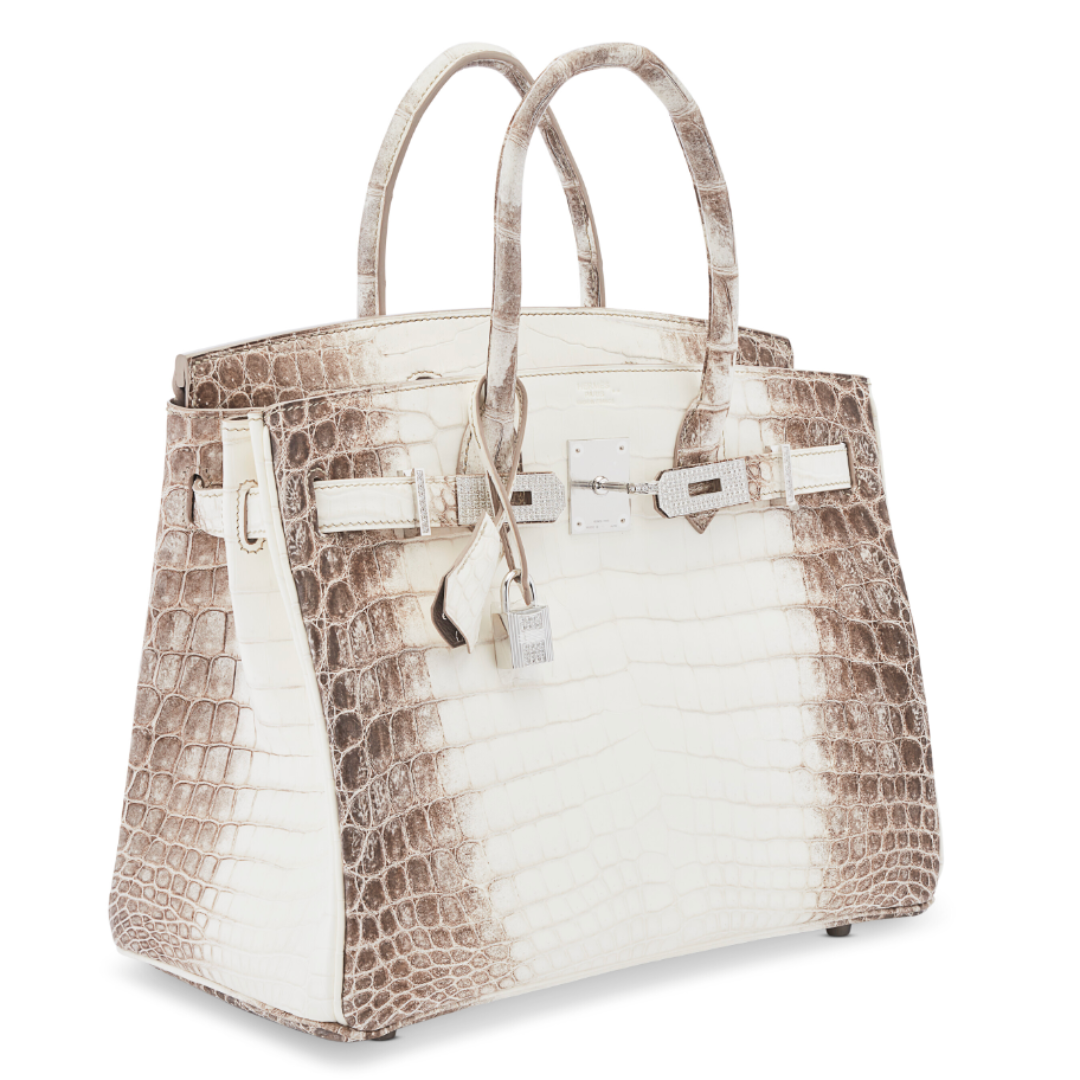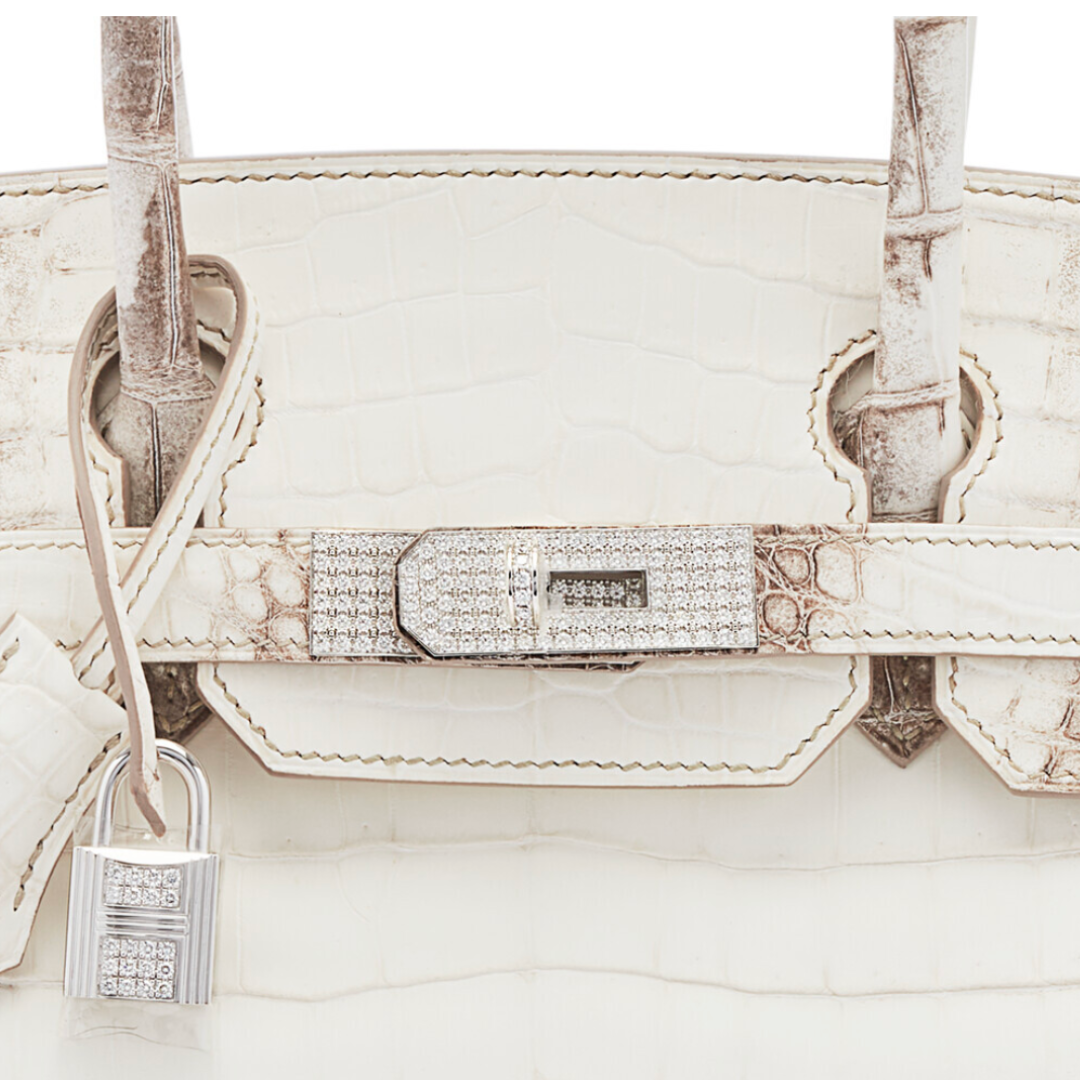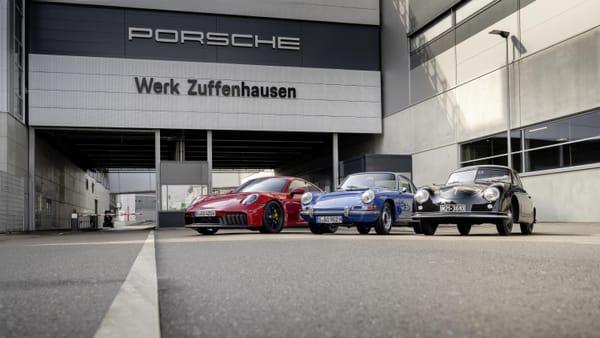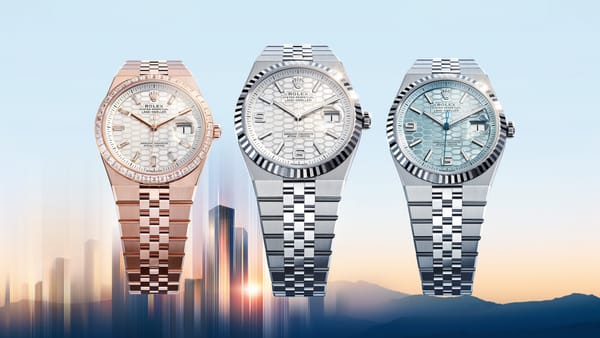The world’s most expensive handbag: Hermès Birkin Himalaya Niloticus crocodile diamond
Hermès Birkin Himalaya Niloticus Crocodile Diamond Bag, the pinnacle of luxury handbags known for rarity, elegance and record prices.

When it comes to luxury handbags, few brands hold as much prestige as Hermès. Renowned for their timeless design, exceptional craftsmanship, and exclusivity, Hermès bags are highly sought after by fashion enthusiasts and collectors alike. Among these masterpieces, the Hermès Birkin Himalaya Niloticus crocodile with 18K white gold and diamond hardware stands as the pinnacle of opulence and elegance. As the most expensive handbag in the world, it represents both a fascinating history and extraordinary craftsmanship that set it apart from any other accessory.

The origins of the Hermès Birkin bag
Introduced in 1984, the Hermès Birkin bag has a legendary origin story. It was named after the late British actress and singer Jane Birkin, who had a chance encounter with Hermès' then-CEO, Jean-Louis Dumas, on a flight from Paris to London. During their conversation, Birkin mentioned her difficulty in finding a stylish yet practical handbag. Inspired by this, Dumas designed the Birkin bag to blend elegance with functionality. Since its launch, the Birkin bag has become a symbol of luxury, with long waiting lists and high prices adding to its allure.
The unique Himalaya Niloticus crocodile leather
The Himalaya Birkin is distinguished by its exceptionally rare Niloticus crocodile leather, sourced from the Nile River region in Africa. The term "Himalaya" refers to the bag’s unique gradient, transitioning from smoky grey to pearly white, resembling the snow-capped peaks of the Himalayas. The complex dyeing process required to achieve this effect is labour-intensive, making each bag a unique piece of art. The rarity of Niloticus crocodile leather, combined with the intricate craftsmanship needed, makes the leather exceptionally costly, and only a few skilled artisans at Hermès are qualified to work with it.
The diamond encrustation: ultimate luxury
In addition to the exotic leather, the Hermès Birkin Himalaya Niloticus crocodile bag features luxurious diamonds. It is adorned with 18-carat white gold hardware and over 200 diamonds totalling 8.2 carats. The meticulous setting of diamonds into the clasps, lock, and keys adds a dazzling touch of extravagance. This combination of rare materials and precious stones transforms the Birkin Himalaya into more than just a handbag—it is a wearable work of art, a collector's item, and a status symbol.

Record-breaking auction prices
The Hermès Birkin Himalaya Niloticus crocodile diamond bag has consistently set records at auctions, confirming its status as the world’s most expensive handbag. In 2022, Sotheby's sold a Diamond Himalaya Birkin 30 for over $450,000 USD. These record-breaking prices reflect the bag’s rarity, craftsmanship, and the growing demand among collectors and fashion enthusiasts. Owning a Birkin Himalaya is seen as the ultimate symbol of luxury, wealth, and exclusivity.
Why the Hermès Birkin Himalaya Niloticus crocodile diamond bag is so desirable
The Hermès Birkin Himalaya Niloticus crocodile diamond bag’s appeal lies not only in its stunning design and luxurious materials but also in its exclusivity. With only a very limited number produced each year, acquiring one is extremely challenging. This rarity, combined with Hermès' storied heritage and the bag’s undeniable beauty, creates unparalleled desirability. Additionally, the Birkin Himalaya has transcended fashion to become a symbol of status and success, coveted by celebrities, royalty, and the wealthiest individuals. For many, owning a Birkin Himalaya is not merely about having a handbag—it’s about owning a piece of history and a statement of ultimate luxury.
The challenges of securing an Hermès Birkin Himalaya Niloticus crocodile diamond bag
The wait time for an Hermès Birkin bag, especially the Birkin Himalaya Niloticus crocodile diamond version, is notoriously lengthy and unpredictable. Here’s why:
- Highly exclusive production
- Hermès produces only a limited number of Birkin bags each year, with the Himalaya version being even rarer. The complex craftsmanship, particularly the dyeing process for the unique Himalaya leather, results in very few bags being made.
- Extended waiting lists
- Hermès boutiques do not typically allow customers to walk in and purchase a Birkin bag immediately. Instead, potential buyers often face waiting lists, which can range from months to years for a standard Birkin. For a Birkin Himalaya, the wait can be even longer, with no guarantee of securing one.
- Selection criteria
- Hermès does not operate on a first-come, first-served basis. The brand prioritises loyal, long-term customers with a history of high-value purchases. Therefore, even if you’re on the waiting list, there’s no guarantee you’ll be selected to purchase a Birkin Himalaya.
- Uncertain timelines
- The actual wait time can vary significantly based on factors such as your relationship with the brand, purchase history, and location. Some customers have reported waiting several years, while others may never get the opportunity to buy one directly from Hermès.
- Secondary market availability
- Due to long wait times and high demand, many turn to the secondary market (resellers or auction houses) to acquire a Birkin Himalaya. However, prices on the secondary market can be significantly higher than the retail price, often reaching hundreds of thousands of dollars.
In summary, the wait time for an Hermès Birkin Himalaya Niloticus crocodile diamond bag is not only long but also highly unpredictable, often extending over several years with no guarantee of availability.





